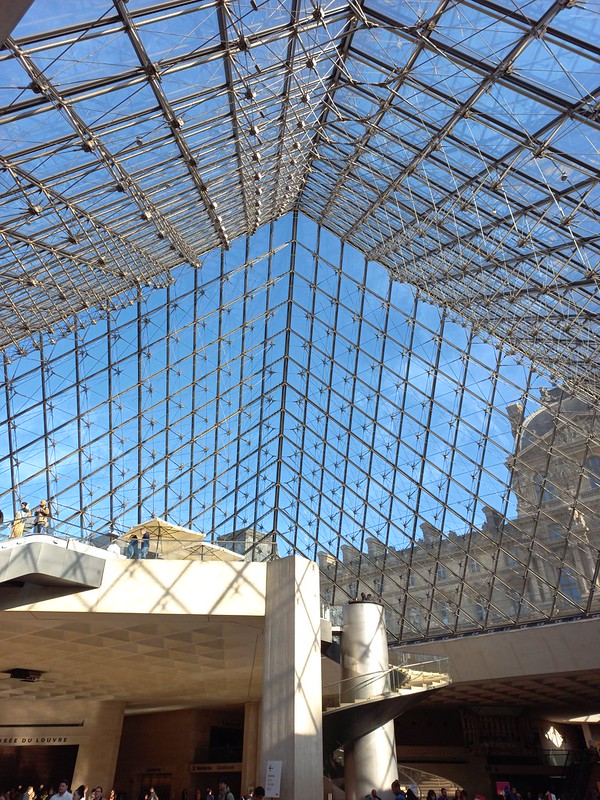The Louvre Museum (Musée du Louvre) in Paris is the world’s largest and most visited art museum, attracting around 10 million visitors every year. Known for its glass pyramid entrance and its unrivaled collection of masterpieces, the Louvre is a must-visit for anyone traveling to Paris.
Once a royal palace, the museum now houses more than 35,000 works of art, spanning ancient civilizations to the 19th century. It is not only the home of Leonardo da Vinci’s Mona Lisa but also a treasure trove of history, sculpture, paintings, and decorative arts.
History of the Louvre
- Originally built as a medieval fortress in the late 12th century
- Transformed into a royal palace during the French Renaissance
- Converted into a public museum in 1793, following the French Revolution
- Today, the Louvre is a symbol of art and culture worldwide, with collections divided into several departments, each showcasing a unique era of history.
Departments of the Louvre
The museum is organized into the following sections:
- Egyptian Antiquities: Mummies, sphinxes, and treasures from ancient Egypt
- Oriental Antiquities: Ancient Mesopotamian, Persian, and Levantine art
- Greek, Etruscan, and Roman Antiquities: Sculptures and artifacts from classical civilizations
- Islamic Art: Intricate ceramics, glass, and manuscripts
- Paintings: Masterpieces from the Middle Ages to the 19th century
- Sculptures & Decorative Arts: Iconic statues, furnishings, and royal treasures
- Prints & Drawings: Rare sketches, manuscripts, and illustrated works
Famous Masterpieces at the Louvre
Paintings
- Mona Lisa by Leonardo da Vinci: the world’s most famous portrait
- Liberty Leading the People by Eugène Delacroix: symbol of the French Revolution
- The Wedding at Cana by Paolo Veronese: one of the largest paintings in the museum
Sculptures
- Venus de Milo: an ancient Greek statue of Aphrodite
- Winged Victory of Samothrace (Nike of Samothrace): a breathtaking Hellenistic masterpiece
- Seated Scribe: an ancient Egyptian sculpture of remarkable realism
Other highlights include The Coronation of Napoleon by Jacques-Louis David, the Great Sphinx of Tanis, and the richly decorated ceilings throughout the galleries.
The Louvre Pyramid
The Louvre’s most recognizable feature is its glass pyramid entrance, designed by architect I. M. Pei and inaugurated in 1989. The pyramid and the inverted pyramid inside the Carrousel du Louvre shopping center have since become modern icons of Paris.
Visiting the Louvre: Practical Tips
Book Tickets in Advance: The museum is one of the busiest in the world; online reservations are highly recommended.
- Plan Your Route: With 35,000 works on display, it’s impossible to see everything in one day. Focus on the highlights or one department.
- Best Time to Visit: Arrive early in the morning or on evening openings for fewer crowds.
- Guided Tours & Audio Guides: A great way to understand the history and context of the artworks.
FAQs about the Louvre
What is the most famous artwork in the Louvre?
The Mona Lisa by Leonardo da Vinci is the museum’s most visited masterpiece.
How many works of art are in the Louvre?
Over 35,000 works are on display, with collections spanning ancient to modern times.
What are the must-see sculptures in the Louvre?
Highlights include the Venus de Milo, Winged Victory of Samothrace, and the Seated Scribe.
Is the Louvre the biggest museum in the world?
Yes, with over 72,000 m² of exhibition space, it is the largest art museum on Earth.
Do you need a full day for the Louvre?
A full day is recommended to explore the highlights, though many visitors choose shorter visits focusing on key departments.
Practical Information
📍 Location: Rue de Rivoli, 75001 Paris, France
🌐 Website: louvre.fr/en
🚇 Nearest Metro: Palais Royal, Musée du Louvre (Lines 1 & 7)
🕒 Opening Hours: 9:00 AM – 6:00 PM (Closed Tuesdays)
🎟️ Tickets: Available online; free admission for visitors under 18 and EU residents under 26








